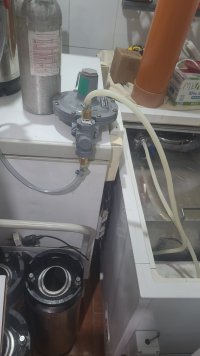One of several possibilities:
1). You have a large liquid volume and little or no headspace; or,
2). You have an air leak around the 'plug' that allows the negative vacuum pressure to equalize; or,
3). The temperature delta between your beer's starting temperature and the crashed temperature is not that great to create a significant negative pressure vacuum; or,
4). You have an undiscovered breach of your Anvil's lid seal gasket that allows the tank to equalize; or,
5). The smaller size of a 4 gallon bucket affords greater rigidity, thus resistance to deformation, than a 7 or 14 gallon Brew Bucket; or,
6). Good luck and fortune have gotten you this far without destroying your gear. Consider it borrowed time; or,
7). One or more of the above
There's one other possible explanation, but you'd have to exist in an alternative reality where the physical laws of the universe don't.
Somewhere in my archives of aviation blunders I have pictures of a 6,000 gallon fuel truck that imploded while defueling an airplane when the truck's negative pressure relief valve wasn't opened by the refueler. In another instance the wing of a B-52 was sucked in, crushed and broke away from the fuselage, totally destroying the airplane, when the automatic wing tank vent failed to open when it was being defueled. So, scratch one steel tanker truck and one multi-million dollar bomber due to separate accidents caused by negative pressure (vacuum). I can guarantee you that both the truck and the B-52 were a lot more sturdy than your Anvils are.
Brooo Brother
















![Craft A Brew - Safale BE-256 Yeast - Fermentis - Belgian Ale Dry Yeast - For Belgian & Strong Ales - Ingredients for Home Brewing - Beer Making Supplies - [3 Pack]](https://m.media-amazon.com/images/I/51bcKEwQmWL._SL500_.jpg)












































